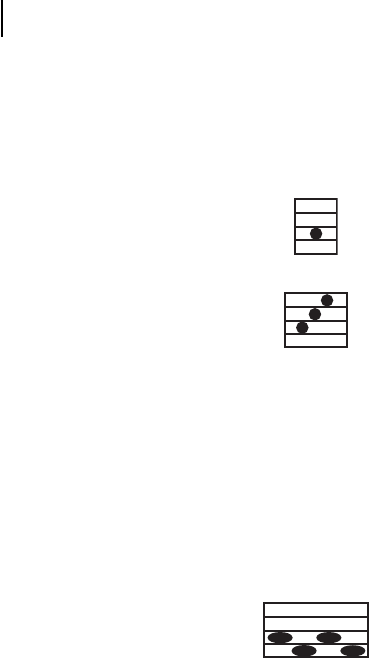User's Manual
Table Of Contents

RADIORANGER Instruction Manual Date Code 20070301
SEL-8310 Remote Fault Reader Operation
Audio Indication
3.6
FCI Status Summary—No Tripped FCI(s)
The No Tripped FCI(s) status will be annunciated if the SEL-8310 receives valid data
from an SEL-8300 with no tripped FCIs. This annunciation will occur following a
press of the
{Next} button, if the next ID contains no tripped FCI(s). As indicated in
Figure 3.9 and Figure 3.10, the annunciation will vary for most audible modes.
Figure 3.9 FCI Status Summary–No Tripped FCI(s) Indication in Silent Mode
Figure 3.10 FCI Status Summary–No Tripped FCI(s) Indication in Summary,
Row/Column, or Morse Code Mode
Data Collision
The Data Collision status will be annunciated if the SEL-8310 receives valid data from
two SEL-8300 units set to the same ID. This annunciation will sound after a scan when
the ID containing multiple SEL-8300 units is selected after pressing the
{Next} button.
For more information on Data Collision see Scanning for and Retrieving Data from
SEL-8300 Units on page 3.10. This is a set of long tones alternating between two
pitches (high-low, high-low).
Figure 3.11 Data Collision Audio Indication in All Audio Modes
FCI Detail
If a user has configured the SEL-8310 for either Row/Column or Morse Code Modes,
the FCI Detail tones will be annunciated after the FCI Status Summary (see DIP Switch
Settings on page 3.2 for more information). These tones will indicate all of the tripped
phases on the lowest faulted Way. If more than one Way contains tripped FCIs, only the
status of the lowest Way with tripped FCIs will be annunciated.
Morse Code Mode
If the current audio mode is Morse Code Mode, then the FCI Detail audio indication
will consist of the lowest Way that contains one or more faults (1, 2, 3, or 4), followed
by each faulted Phase in the Way (A, B, and C). The Morse Code dot-dash patterns for
all possible Ways and Phases are shown in Figure 3.12.
P1
P2
P3
P4
P1
P2
P3
P4
P1
P2
P3
P4










